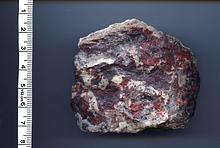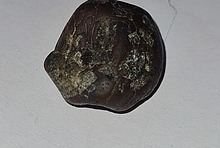Home PageAbout MindatThe Mindat ManualHistory of MindatCopyright StatusWho We AreContact UsAdvertise on Mindat
Donate to MindatCorporate SponsorshipSponsor a PageSponsored PagesMindat AdvertisersAdvertise on Mindat
Learning CenterWhat is a mineral?The most common minerals on earthInformation for EducatorsMindat ArticlesThe ElementsThe Rock H. Currier Digital LibraryGeologic Time
Minerals by PropertiesMinerals by ChemistryAdvanced Locality SearchRandom MineralRandom LocalitySearch by minIDLocalities Near MeSearch ArticlesSearch GlossaryMore Search Options
The Mindat ManualAdd a New PhotoRate PhotosLocality Edit ReportCoordinate Completion ReportAdd Glossary Item
Mining CompaniesStatisticsUsersMineral MuseumsClubs & OrganizationsMineral Shows & EventsThe Mindat DirectoryDevice SettingsThe Mineral Quiz
Photo SearchPhoto GalleriesSearch by ColorNew Photos TodayNew Photos YesterdayMembers' Photo GalleriesPast Photo of the Day GalleryPhotography
╳Discussions
💬 Home🔎 Search📅 LatestGroups
EducationOpen discussion area.Fakes & FraudsOpen discussion area.Field CollectingOpen discussion area.FossilsOpen discussion area.Gems and GemologyOpen discussion area.GeneralOpen discussion area.How to ContributeOpen discussion area.Identity HelpOpen discussion area.Improving Mindat.orgOpen discussion area.LocalitiesOpen discussion area.Lost and Stolen SpecimensOpen discussion area.MarketplaceOpen discussion area.MeteoritesOpen discussion area.Mindat ProductsOpen discussion area.Mineral ExchangesOpen discussion area.Mineral PhotographyOpen discussion area.Mineral ShowsOpen discussion area.Mineralogical ClassificationOpen discussion area.Mineralogy CourseOpen discussion area.MineralsOpen discussion area.Minerals and MuseumsOpen discussion area.PhotosOpen discussion area.Techniques for CollectorsOpen discussion area.The Rock H. Currier Digital LibraryOpen discussion area.UV MineralsOpen discussion area.Recent Images in Discussions
Mineralogical ClassificationLileyite = IMA 2011-021
28th Aug 2011 17:59 UTCUwe Kolitsch Manager
http://forum.amiminerals.it/viewtopic.php?f=5&t=8047
Ba2(Na,Fe,Ca)3MgTi2(Si2O7)2O2F2
10th Feb 2012 18:04 UTCUwe Kolitsch Manager
www.ingentaconnect.com/content/schweiz/ejm/pre-prints/ejm2174
Lileyite, Ba2(Na,Fe,Ca)3MgTi2(Si2O7)2O2F2, a new lamprophyllite-group mineral from the Eifel volcanic area, Germany
NIKITA V. CHUKANOV, IGOR V. PEKOV, RAMIZA K. RASTSVETAEVA, SERGEY M. AKSENOV, ALEKSANDR E. ZADOV, KONSTANTIN V. VAN, GÜNTER BLASS, WILLI SCHÜLLER and BERND ERNES
The new Mg- and F-dominant lamprophyllite-group mineral lileyite (IMA 2011-021) was found at the Löhley quarry, Üdersdorf, near Daun, Eifel Mountains, Rhineland-Palatinate (Rheinland-Pfalz), Germany, and named for the old name of the type locality, Liley. Associated minerals are nepheline, leucite, augite, magnetite, fluorapatite, perovskite, götzenite. Lileyite is brown, translucent; streak is white. It forms platy crystals up to 0.1 × 0.3 × 0.5 mm in size and their clusters up to 1 mm across on the walls of cavities in an alkaline basalt. Lileyite is brittle, with Mohs hardness of 3–4 and perfect cleavage on (001). Dcalc is 3.776 g/cm3. The new mineral is biaxial (+), α = 1.718(5), β = 1.735(5), γ = 1.755(5), 2V (meas.) = 75(15)°, 2V (calc.) = 86°. The IR spectrum is given. The chemical composition is (EDS-mode electron microprobe, mean of 5 analyses, wt%): SiO2 28.05, BaO 26.39, TiO2 18.53, Na2O 6.75, MgO 4.58, FeO 4.48, CaO 2.30, SrO 2.23, MnO 1.44, K2O 1.41, Nb2O5 0.95, F 3.88, -O=F2 -1.63; total 99.36. The empirical formula based on 18 anions is: Ba1.50Sr0.19K0.26Na1.89Ca0.36Mn0.18Mg0.99Fe0.54Ti2.01Nb0.06Si4.06O16.23F1.77. The simplified formula is: Ba2(Na,Fe,Ca)3MgTi2(Si2O7)2O2F2. The crystal structure was solved using single-crystal X-ray diffraction data (R = 0.024). Lileyite is monoclinic, space group C2/m, a = 19.905(1), b = 7.098(1), c = 5.405(1) Å, β = 96.349(5)°,V = 758.93(6) Å3, Z = 2. The strongest lines of the powder diffraction pattern are: 3.749 (45) (31–1), 3.464 (76) (510, 311, 401), 3.045 (37) (51–1), 2.792 (100) (221, 511), 2.672 (54) (002, 601, 20-2), 2.624 (43) (710, 42–1). Type material is deposited in the collections of the Fersman Mineralogical Museum of the Russian Academy of Sciences, Moscow, Russia, registration number 4106/1.




Mindat.org is an outreach project of the Hudson Institute of Mineralogy, a 501(c)(3) not-for-profit organization.
Copyright © mindat.org and the Hudson Institute of Mineralogy 1993-2024, except where stated. Most political location boundaries are © OpenStreetMap contributors. Mindat.org relies on the contributions of thousands of members and supporters. Founded in 2000 by Jolyon Ralph.
Privacy Policy - Terms & Conditions - Contact Us / DMCA issues - Report a bug/vulnerability Current server date and time: April 18, 2024 15:28:11
Copyright © mindat.org and the Hudson Institute of Mineralogy 1993-2024, except where stated. Most political location boundaries are © OpenStreetMap contributors. Mindat.org relies on the contributions of thousands of members and supporters. Founded in 2000 by Jolyon Ralph.
Privacy Policy - Terms & Conditions - Contact Us / DMCA issues - Report a bug/vulnerability Current server date and time: April 18, 2024 15:28:11











